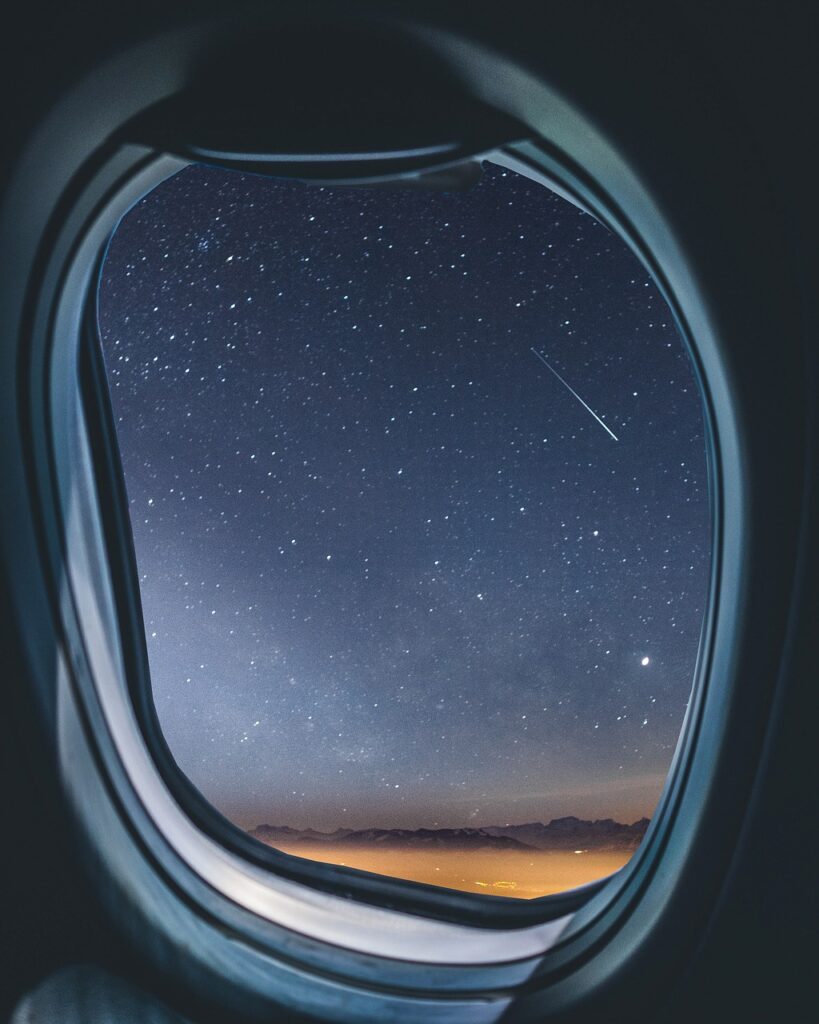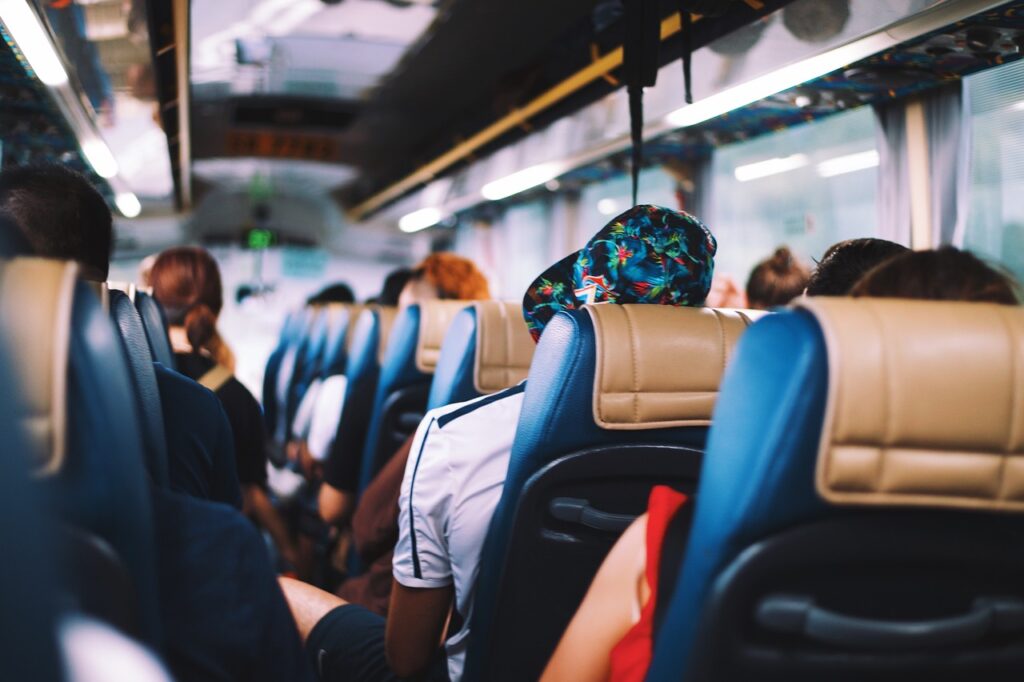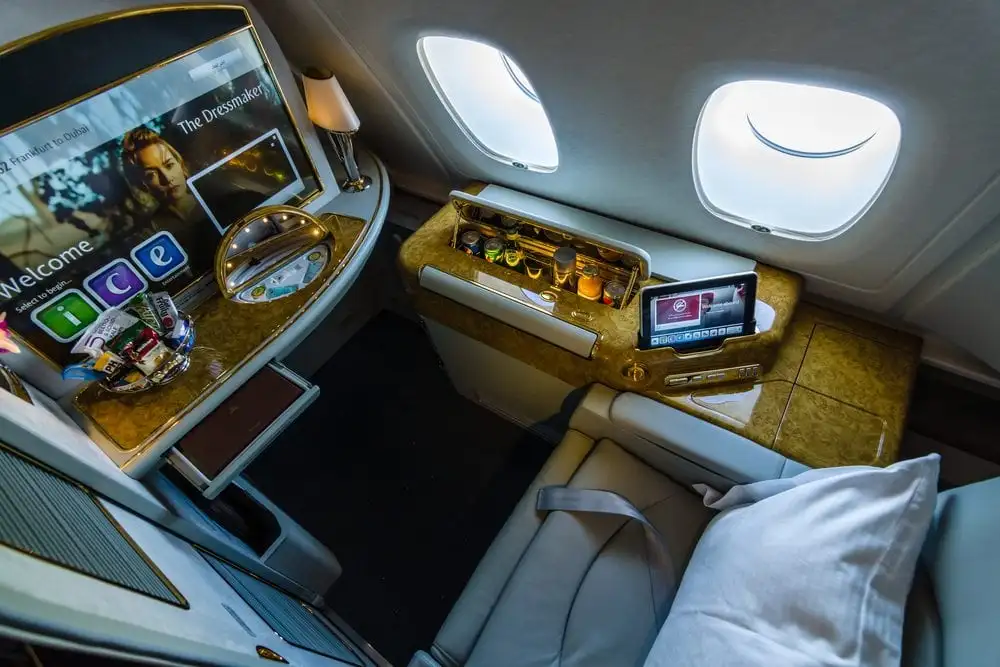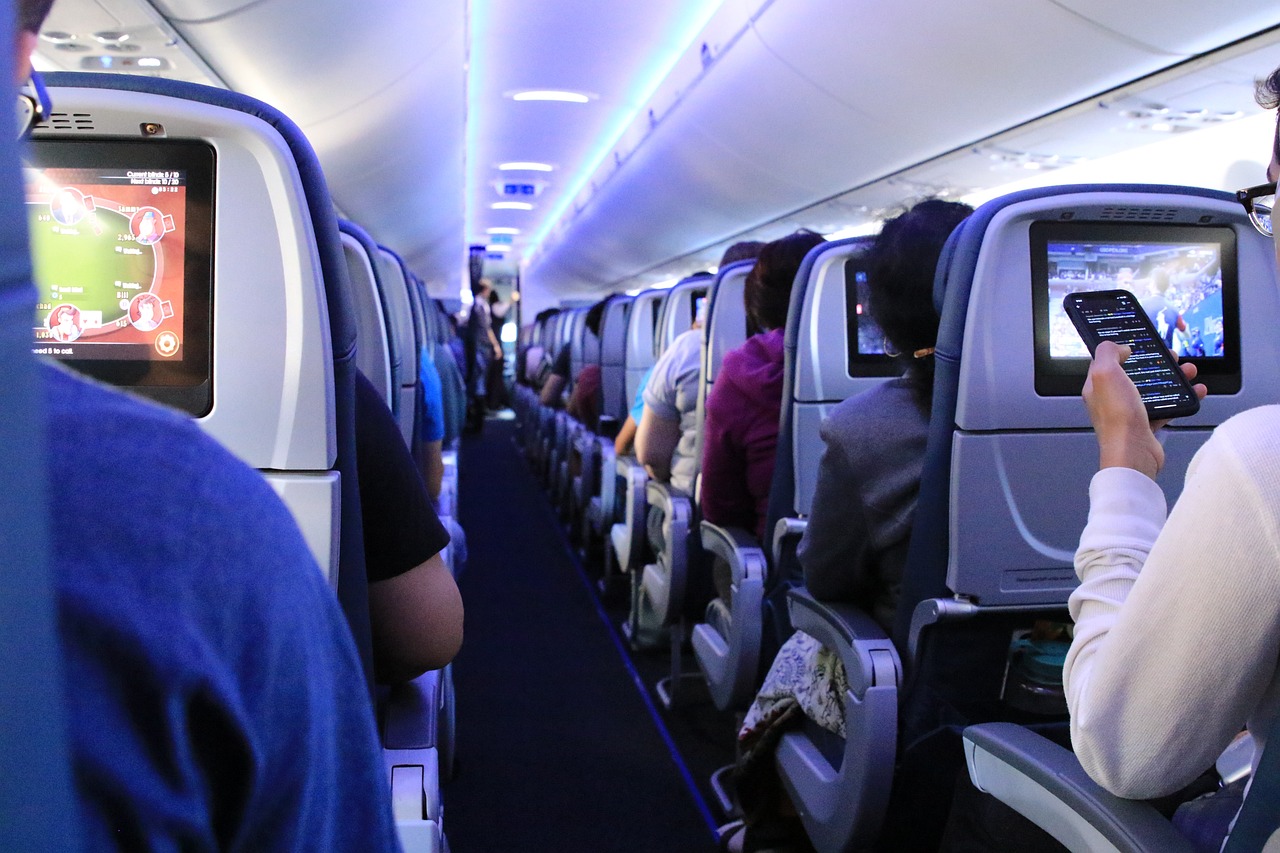Traveling by air is an interesting adventure, with new insights and sights, many of which are unusual. There are countless oddities of aircraft that gain the attention of the passengers, from the unusual design of the airplane to the outlandish occurrences onboard. Here are some captivating features that you might have noticed while on a plane and reasons that can explain these unique phenomena of Airplane Cabin.
1-The Peculiar Design of the Airplane Windows

Most people will probably wonder why airplane windows are not square, which is quite unusual, but they will be rounded or oval most of the time. There is purpose behind this, and it is not just for beauty; it is a safeguard. The rounded shape of the windows minimizes the likelihood of cracks or structural failure by more evenly distributing the stress on the windows at high altitudes. Windows with right angles, have increased risk of stress points that may lead to failure. Pressurized aircrafts were designed with this adjustment due to earlier incidents where a square window would buckle under pressure due to the pressure.
2-Take Off and Landing When the airplane cabin’s Interiors Are Not Well Lit
Do you know why the airplane cabin’s lights are always turned low when taking off or landing? It is for security purposes. If there is an emergency, it helps the passengers’ eyes to adjust outside the airplane cabin so that they can see the emergency exit signs and the path. Furthermore, when the illumination is lower, it helps to save the power needed for emergency systems.
3-A Weird Thorn or A Humming Sound Present if Listening Carefully in the airplane Cabin
If you’ve ever been on a flight and wondered why there’s a constant noise inside the airplane cabin, that’s not something out of your mind. Such kind of sound very commonly originates from air ventilation if it’s present in the aircraft. Another kind of source of sound could perhaps be the wind that is around the different sides of the airplane’s body, when the airplane is already in cruising mode. Such sounds are natural and frequently exacerbated by the confined internal area of an aircraft.
4-The “Seatbelt Sign” That Remains On When Everything Seems Calm
Sometimes, it is confusing when the air actually seems smooth but the passenger seatbelt sign is still on. And the answer to that is simple: it is a safety issue. Pilots may encounter surprises such as turbulence or a rough approach to land. By keeping the passenger seatbelt sign illuminated, the pilots wish to keep the passengers chained to the seat, thus avoiding any chances of them getting hurt. In such urgent matters, especially one that involves safety, it is alright to be on the safer side.
5-Airplane Cabin Cold Weather, is It Truly Really Needed

If there’s one thing that our airplane cabins are noted for, it is those chilly temperatures and there’s an explanation for it as well. Because of the stress levels that passengers will experience as they rise to high heights and the oxygen levels drop, it is critical to have a cooler cabin. The airplane cabin can also be cooled because the possibility of someone fainting due to low oxygen levels is also reduced. And there is one more reason why it is more sensible to keep the temperature inside the cabin low: it saves the aircraft’s air conditioning units.
6-Odd Orbital Enlightments Outside the Prime Viewing Areas
Anyone who has ever seen rapid flickering lights or strange halos around the airplane wing when peeping through the windows must have witnessed St Elmo’s fire. It occurs when the aircraft is passing through a high charged area in the atmosphere like a thunderstorm. It is due to ionized air which creates a glow on the tips of the wings and sometimes the windshield. Even though it looks alarming, it is not harmful in any way.
Read More About- Air Travel
7-Apparent Loss of Feel on Middle Ear Towards the End of Final Approach Phase
Ears popping or ears blockage and discomfort felt by individuals during the takeoff and landing phases is due to the alterations in the airplane cabin pressure. All the sudden altitude change alters the pressure in the inner ear and one gets a still blocked feeling. Pressure imbalance can be coped with by chewing gum, swallowing or yawning, which activates this reflex.
8-Pinholes in the Outer Airplane Windows
At the bottom of each pane, there seems to be a little hole which is not very clearly visible, which is actually called the breather hole. This pin head hole saves many things. First, this hole restrains pressure which builds up between the outside and the inner glass panes. Secondly, this kind of hole also helps to maintain dry glass windows which eventually helps to even out pressure differences and gives structural support to the glass and panes.
9-Sudden Falling or Jumping of An Aircraft During Flight Turbulence

Turbulence is not comfortable for most people, and it can be distressing to feel like the aircraft is suddenly falling or jumping. The reason for this is the erratic force and such wind variations in the surrounding atmosphere that lead the airplane off track in attempting to reach its destination. To avoid turbulence situations, pilots constantly seek for a smoother flight and change levels if needed.
10-The Unpleasant Or Unknown Odor Experienced When Entering an Airplane
There is a scent in the planes which is usually a combination of the disinfection solution or cabin’s components, or even fuel smell. In addition, the aircraft’s system takes in outside air, mixes it with the air in the airplane cabin, and returns it, so there are such smells. While it can be called odd, it is perfectly alright and it does not raise any alarms with regard to safety.
11-The Altered Taste of In-Flight Meals
When flying on an airplane, the atmosphere is not the same as it is on the ground, and this can change one’s sense of taste. The humidity, in addition to the airplane cabin pressure, can reduce the taste of sweet and salty food by as much as 30%. For this reason, some airlines try to add additional salt and more spices to the food in a bid to maximize the taste. This is probably the reason why some in-flight meals taste different from those eaten on the ground.
12-Come Fly With Me: The ‘new normal’ to Emergency Doors
Have you ever wondered why the emergency exits are usually camouflaged?? This is due to the fact that these doors are not intended for opening even in the event of an emergency throughout the flight. They should be made easy to overlook in order to prevent any interference from the passengers in the aircraft.
13-Travel and Contents with Touchy Feelings
Airplane travel can sometimes bring out the best and worst of many people. It may be the fear of the flight, the thrill of the variability of the travel and experiences or the packed atmosphere, whatever the case it is not uncommon for passengers to act in somewhat out of character mannerisms such as wearing pajamas and walking around without shoes or bathing in the aisles.
- The Use of Minimized Overhead Announcements
The majority of the announcements that airlines make can be classified as essential. This practice is designed to comfort and reduce the likelihood of interference to the passengers making the vital message, such as instructions on safety, more pronounced when it is being given.
15-Why Airplane Bathrooms Are Always Locked
It is common for airborne lavatories to be hot locked, but the question arises: is there a way to unlock them from the outside? For the answer, we look at simple safety precautions. Airline staff can reach the toilet in critical situations, for example, when a passenger becomes ill or when someone tries to break a smoke alarm’s glass.

Conclusion
Traveling in an airplane has a number of oddities, and there are sound explanations for most of them. Such peculiarities, whether it’s the interior architecture of the aircraft and safety instructions or the body’s physiological responses to altitude, make flying a truly entertaining activity. On your next trip, see if you can spot these fascinating observations—they will enhance your experience of the flight.
also read-9 Hacks to avoid baggage fees | NO OVERWEIGHT fees + extra FREE carry-on


